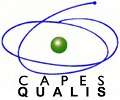Representations of the “image” of Aesop in recent publications of Greco-Latin fables
DOI:
https://doi.org/10.14409/hf.20.24.e0024Keywords:
Greco-Latin Fable, Aesop, Children's literature, Renarration-Classical traditionAbstract
The "image" of Aesop has been crystallized in different texts since classical antiquity as a figure associated with "popular" literature and, therefore, the collections of fables attributed to him went through (and still go through) a complex history of transmission and transformation. In this history, the figure of Aesop as a fabulist has been modalized according to each sociohistorical context in which his fables were recreated. The notion of "image" (Lefevere, 1992) refers to the representations that each era of humanity, through the rewriting of canonical texts, builds of each writer. Also, the notion establishes a dialogue between the ancient sculptural representations, the descriptions in the Graeco-Latin texts and the illustrations of Aesop that most publications of recent fables contain. In this paper we propose to analyze two books of fables attributed to Aesop published in Argentina: Aesop. Fábulas (Ed. Página 12) and Fábulas y antifabulas by Graciela Repún and Enrique Melantoni (2013, Ed. Uranito) because they themselves make up a ‘corpus’ of analysis as they present Aesop as "character" and "narrator". We aim to describe the textual and paratextual operations used in the construction of Aesop as a character/narrator and/or author of fables in these publications in order to problematize the relations of the Greco-Latin fable genre with the current genres of children's literature and didactic materials.
References
Arpes, Marcela y Ricaud, Nora (2008). Literatura infantil argentina: infancia, política y mercado en la constitución de un género masivo. Buenos Aires: La Crujía.
Alvar, Carlos; Carta, Constance; Finci, Sarah (2011). “El retrato de Esopo en los Isopetes incunables: imagen y texto”. En Revista de Filología Española (RFE), XCI, 2.o, p. 233-260, ISSN: 0210-9174.
Bal, Maike (1990) Teoría de la narrativa. Madrid: Cátedra.
Bixio, Cecilia (2005) “La literatura infantil o la infantilización de la literatura”. Disponible online en: https://www.7calderosmagicos.com.ar/Sala%20de%20Lectura/UNR/bixio.htm. Consultado el 1/10/2022
Colección Los grandes para los chicos en Página/12 (2022). En Revista Imaginaria. Disponible onlione en: https://www.pagina12.com.ar/diario/cultura/7-3610-2002-04-05.html; Consultado el 20/07/2022.
Chambry, Émile (1925-6) Ésope. Fables. París: Les Belles Letres.
Díaz Rönner, María Adelia (1989). Cara y cruz de la literatura infantil. Buenos Aires, Libros del Quirquincho.
Frank, Milena (2021) “Consideraciones sobre adaptación y traducción en versiones de fábulas de
Esopo argentinas: el caso de la Colección Mini Biblioteca Trapito y
Ediciones Colihue”. En Actas de las X Jornadas de Estudios Clásicos FAHCE-UNLP, ISSN 2250-6837.
Esopo. Babrio, Fábulas de Esopo, Vida de Esopo. (1993) Trad. de Pedro Bádenas de la Peña y Javier López Facal. Madrid: Ed. Gredos.
Esopo. Fábulas. (2002), Buenos Aires: Ed. La Página S.A.
Fludernik, Monika (2009) An Introduction to Narratology. New York: Rutledge.
García Gual, Carlos (S/D) “La tradición abierta de los clásicos populares”. Disponible online: file:///C:/Users/Usuario/Downloads/la-tradicin-abierta-de-los-clsicos-populares-0.pdf
García Jurado, Francisco (2016) Teoría de la tradición clásica. Conceptos, historia y métodos. México: Universidad Nacional Autónoma de México.
Gibbs, Laura (1986) Lost in a town of pigs. The story of Aesop’s fables. Berkerley: University of California.
Hausrath, August (1940-1956). Corpus Fabularum Aesopicarum. Leipzig: Teubner.
Lefevere, André (1992) Traducción, reescritura y la manipulación del canon literario. Trad. de Ma. Del Carmen África Vidal y Román Álvarez. Ed. Colegio de España, 1997.
Lotman, Iuri y Mints, Sara (1981) “Literatura y mitología”. Trad. de Desiderio Navarro. En La semiosfera I. Semiótica de la cultura y del texto, Madrid: Cátedra, pp. 129-142.
Matic, Gordana (2017) Aesopus emendatus: la fábula contemporánea iberoamericana. precursores, exponentes y situación actual. Tesis doctoral, Zagreb. Disponible online: http://darhiv.ffzg.unizg.hr/id/eprint/9475/1/Matic,%20Gordana.pdf
Perry, Ben Edwin (1952) Aesopica: A Series of Texts Relating to Aesop or Ascribed to Him. Urbana: University of Illinois Press.
Propp, Vladimir (2006) Morfología del cuento. Madrid: Editorial Fundamentos.
Repún, Graciela y Melantoni, Enrique (2013) Fábulas y antifábulas. Buenos Aires: Uranito Editores.
Sánchez Corral, Luis (1992) “(Im)posibilidad de la literatura infantil: hacia una caracterización estética del discurso”. Cauce 14-15, pp. 525-560.
Sardi, Valeria (2009) “Literatura para niños y escuela: una aproximación histórica”. En Actas de las I Jornadas de Poéticas de la Literatura Argentina para Niñ@s, Universidad Nacional de La Plata. Disponible online: https://memoria.fahce.unlp.edu.ar/library?a=d&c=eventos&d=Jev7737
Schritter, Istvan (2005) La otra lectura: la ilustración en los libros para niños. Buenos Aires: Lugar Editorial.
Trevisán, Olga Natalia. (2019) La épica grecolatina: Ilíada, Odisea y Eneida en la literatura destinada a niños y jóvenes de Argentina. Resistencia: ConTexto Libros.
Published
How to Cite
Issue
Section
License
Copyright (c) 2022 El Hilo de la Fabula

This work is licensed under a Creative Commons Attribution-NonCommercial-ShareAlike 4.0 International License.












